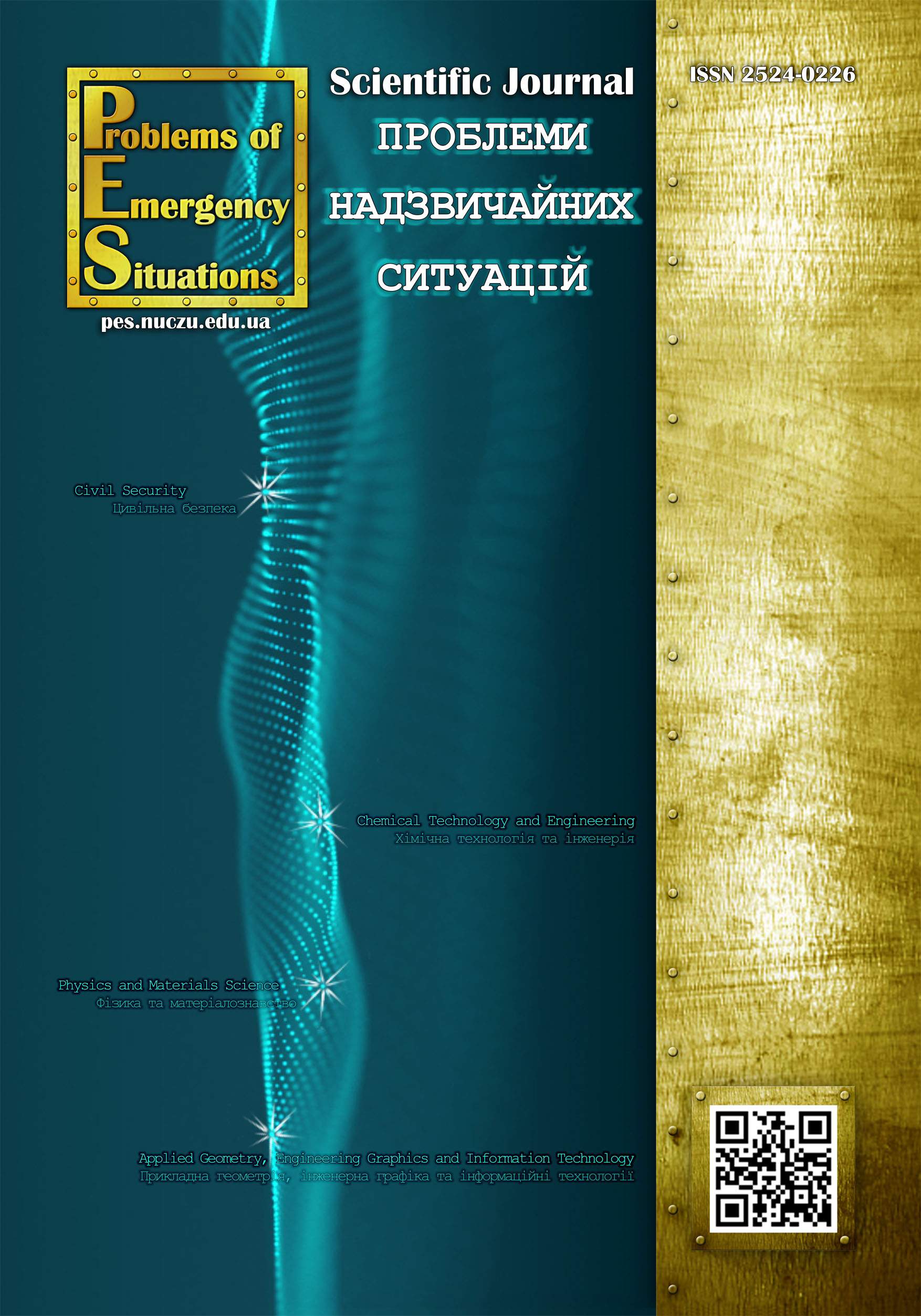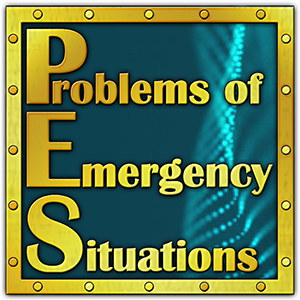Підвищення рівня безпеки роботів та маніпуляторів
Цимбал Богдан Михайлович
Національний університет цивільного захисту України
http://orcid.org/0000-0002-2317-3428
Рибка Євгеній Олексійович
Національний університет цивільного захисту України
https://orcid.org/0000-0002-5396-5151
Свіржевський Петро Вікторович
Національний університет цивільного захисту України
https://orcid.org/0009-0004-2463-5841
Рибалова Ольга Володимирівна
Національний університет цивільного захисту України
http://orcid.org/0000-0002-8798-4780
Петрищев Артем Станіславович
Національний університет «Запорізька політехніка»
http://orcid.org/0000-0003-2631-1723
DOI: https://doi.org/10.52363/2524-0226-2025-41-1
Ключові слова: професійні ризики, безпека праці, коботи, роботи, маніпулятори, штучний інтелект
Анотація
Дослідження зосереджене на розробці методики підвищення рівня безпеки роботів та маніпуляторів у промисловому середовищі. Роботизовані системи ефективно виконують складні та небезпечні завдання, але водночас створюють нові ризики для працівників, що потребує систематичної оцінки та управління. Було проведено аналіз основних факторів, які впливають на безпеку роботизованих систем, зокрема механічні, ергономічні, термічні та електричні небезпеки. На основі цього розроблено універсальну методику оцінки професійних ризиків, яка враховує тяжкість можливих ушкоджень, ймовірність їх виникнення, кваліфікацію персоналу, швидкість настання небезпеки та рівень обізнаності працівників. Методика включає розроблені чек-листи, матриці оцінки ризиків та анкети для ідентифікації небезпечних факторів та визначення рівня ризиків. Для перевірки її ефективності було проведено апробацію на машинобудівному підприємстві, де оцінено ри-зики для працівників, які працюють із вимірювальною рукою Absolute Arm 7-Axis, координатно-вимірювальною машиною GLOBAL S GREEN 05.07.05 та зварювальним роботом ABB IRB 1400 M94A. Було встановлено, що найбільш небезпечним робочим місцем є робоче місце оператора зварювального робота ABB IRB 1400 M94A, бо він зіштовхується з механічними, термічними, електричними, ергономічними, комбінованими небезпека та небезпекою випромінювання, найбільше значення має ризик при контакті оператора з струмоведучими частинами або з’єднаннями, що сладає 51 (суттєвий). Результати показали ключові ризики на робочих місцях, а також ефективність розроблених заходів із їх мінімізації. Запроваджено навчання персоналу, обмеження доступу до небезпечних зон та використання засобів індивідуального захисту. Методика може бути застосована для ідентифікації ризиків та впровадження заходів безпеки на підприємствах різних галузей.
Посилання
1 Industrial robots, workers’ safety, and health / R. Gihleb et al. Labour economics. 2022. Vol. 78. P. 102205. doi: 10.1016/j.labeco.2022.102205
- Caiazzo C., Nestić S., Savković M. A systematic classification of key performance indicators in human-robot collaboration. Sustainable business management and digital transformation: challenges and opportunities in the post-covid era. Cham. 2022. P. 479–489. doi: 10.1007/978-3-031-18645-5_30
- Yetkin B. N., Ulutas B. H. A Literature Review on Human-robot Collaborative Environments Considering Ergonomics. Lecture Notes in Management and Industrial Engineering. Cham. 2022. P. 49–60. doi: 10.1007/978-3-031-08782-0_5
- Operations management issues in design and control of hybrid human-robot collaborative manufacturing systems: a survey / S. E. Hashemi-Petroodi et al. Annual reviews in control. 2020. Vol. 49. P. 264–276. doi: 10.1016/j.arcontrol.2020.04.009
- Gualtieri L., Rauch E., Vidoni R. Emerging research fields in safety and ergonomics in industrial collaborative robotics: a systematic literature review. Robotics and Computer-Integrated Manufacturing. 2021. Vol. 67. P. 101998. doi: 10.1016/
j.rcim.2020.101998
- Olsen T. L., Tomlin B. Industry 4.0: opportunities and challenges for operations management. Manufacturing & service operations management. 2020. Vol. 22. № 1. P.113–122. doi: 10.1287/msom.2019.0796
- Physical ergonomic improvement and safe design of an assembly workstation through collaborative robotics / A. Colim et al. Safety. 2021. Vol. 7. № 1. P. 14. doi: 10.3390/safety7010014
- Safety, ergonomics and efficiency in human-robot collaborative assembly: design guidelines and requirements / L. Gualtieri et al. Procedia CIRP. 2020. Vol. 91. P. 367–372. doi: 10.1016/j.procir.2020.02.188
- A human-robot collaboration framework for improving ergonomics during dexterous operation of power tools / W. Kim et al. Robotics and Computer-Integrated Manufacturing. 2021. Vol. 68. P. 102084. doi: 10.1016/j.rcim.2020.102084
- Chutima P. Research trends and outlooks in assembly line balancing problems. Engineering journal. 2020. Vol. 24. № 5. P. 93–134. doi: 10.4186/ej.2020.24.5.93
- Balancing of assembly lines with collaborative robots / C. Weckenborg et al. Business research. 2019. Vol. 13. № 1. P. 93–132. doi: 10.1007/s40685-019-0101-y
- Ergonomics and safety in the design of industrial collaborative robotics / S. Pinheiro et al. Studies in systems, decision and control. Cham. 2021. P. 465–478. doi: 10.1007/978-3-030-89617-1_42
- Srivatsan H., Myagerimath A. V., Duffy V. G. A systematic review of collaborative robots in ergonomics. Digital human modeling and applications in health, safety, ergonomics and risk management. Cham. 2024. P. 282–297. doi: 10.1007/978-3-031-61066-0_17
- Ergonomic human-robot collaboration in industry: a review / M. Lorenzini et al. Frontiers in robotics and AI. 2023. Vol. 9. doi: 10.3389/frobt.2022.813907
- Handbook of human factors and ergonomics / ed. by G. Salvendy, W. Karwowski. Wiley. 2021. doi: 10.1002/9781119636113
- Teaming with industrial cobots: a socio‐technical perspective on safety analysis / A. Adriaensen et al. Human factors and ergonomics in manufacturing & service industries. 2021. Vol. 32. № 2. P. 173–198. doi: 10.1002/hfm.20939
- Redefining safety in light of human-robot interaction: a critical review of current standards and regulations / A. Martinetti et al. Frontiers in chemical engineering. 2021. Vol. 3. doi: 10.3389/fceng.2021.666237
- Human robot collaboration in industrial environments / G. Michalos et al. The 21st century industrial robot: when tools become collaborators. Cham. 2021. P. 17–39. doi: 10.1007/978-3-030-78513-0_2
- Seamless human–robot collaboration in industrial applications / S. Makris et al. Lecture notes in mechanical engineering. Cham. 2024. P. 39–73. doi: 10.1007/978-3-031-54034-9_2
- Human-Centered approach for the design of a collaborative robotics workstation / A. Colim et al. Occupational and environmental safety and health II. Cham. 2020. P. 379–387. doi: 10.1007/978-3-030-41486-3_41
- Kopp T., Baumgartner M., Kinkel S. Success factors for introducing industrial human-robot interaction in practice: an empirically driven framework. The international journal of advanced manufacturing technology. 2020. doi: 10.1007/s00170-020-06398-0
- Collaborative robots in manufacturing and assembly systems: literature review and future research agenda / A. Keshvarparast et al. Journal of intelligent manufacturing. 2024. Vol. 35. P. 2065–2118. doi: 10.1007/s10845-023-02137-w
- Multimodal perception-fusion-control and human–robot collaboration in manufacturing: a review / J. Duan et al. The international journal of advanced manufacturing technology. 2024. doi: 10.1007/s00170-024-13385-2
- Redefining safety in light of human-robot interaction: a critical review of current standards and regulations / A. Martinetti et al. Frontiers in chemical engineering. 2021. Vol. 3. doi: 10.3389/fceng.2021.666237 (date of access: 29.12.2024)
- Keeping workers safe in the automation revolution. Brookings. URL: https://www.brookings.edu/articles/keeping-workers-safe-in-the-automation-revolution/
- Liang C.-J., Cheng M. H. Trends in robotics research in occupational safety and health: a scientometric doi: analysis and review. International journal of environmental research and public health. 2023. Vol. 20. № 10. P. 5904. doi: 10.3390/ijerph20105904
- Editorial: safety in close human-robot interaction / M. Valori et al. Frontiers in robotics and AI. 2023. Vol. 10. doi: 10.3389/frobt.2023.1288713.
- Human–Robot collaboration trends and safety aspects: a systematic review / J. Arents et al. Journal of sensor and actuator networks. 2021. Vol. 10. № 3. P. 48. doi: 10.3390/jsan10030048
- A taxonomy of factors influencing perceived safety in human–robot interaction / N. Akalin et al. International journal of social robotics. 2023. doi: 10.1007/s12369-023-01027-8
- Examining profiles for robotic risk assessment / T. Bridgwater et al. HRI ‘20: ACM/IEEE international conference on human-robot interaction, Cambridge United Kingdom. New York, NY, USA, 2020. doi: 10.1145/3319502.3374804
- Vecellio Segate R., Daly A. Encoding the enforcement of safety standards into smart robots to harness their computing sophistication and collaborative potential: a legal risk assessment for european union policymakers. European journal of risk regulation. 2023. P. 1–40. doi: 10.1017/err.2023.72
- Collaborative robots in manufacturing and assembly systems: literature review and future research agenda / A. Keshvarparast et al. Journal of intelligent manufacturing. 2024. Vol. 35. P. 2065–2118. doi: 10.1007/s10845-023-02137-w
- Risk assessment tools for industrial human-robot collaboration: novel approaches and practical needs / T. P. Huck et al. Safety science. 2021. Vol. 141. P. 105288. doi: 10.1016/j.ssci.2021.105288
- BS EN ISO 12100:2010. Safety of machinery – General principles for design – Risk assessment and risk reduction (ISO 12100:2010). Effective from 2010-10-09. Official edition. Brussels : BSI, 2011. 77 p. URL: https://nobelcert.com/DataFiles/
FreeUpload/BS%20EN%20ISO%2012100-2010.pdf
- Lee K., Shin J., Lim J.-Y. Critical hazard factors in the risk assessments of industrial robots: causal analysis and case studies. Safety and health at work. 2021. doi: 10.1016/j.shaw.2021.07.010
- A SafeML extension for a unified risk assessment to diverse service robots / T. Miyoshi et al. ROBOMECH journal. 2023. Vol. 10. № 1. doi: 10.1186/s40648-023-00245-z
- Novel approach using risk analysis component to continuously update collaborative robotics applications in the smart, connected factory model / M. Pantano et al. Applied sciences. 2022. Vol. 12. № 11. P. 5639. doi: 10.3390/app12115639
- Safe human-robot collaboration: a systematic review of risk assessment methods with AI integration and standardization considerations / M. J. Alenjareghi et al. The International Journal of Advanced Manufacturing Technology. 2024. doi: 10.1007/s00170-024-13948-3
- Safety assessment of human-robot collaborations using failure mode and effects analysis and bow-tie analysis / A. Haggy et al. 21st international conference on informatics in control, automation and robotics, Porto, Portugal, 18–20 November 2024. 2024. P. 432–439. doi: 10.5220/0013017500003822
- Hazard identification and risk assessment of intelligent robots based on virtual reality / X. Liu et al. Frontiers in artificial intelligence and applications. 2023. doi: 10.3233/faia230801
- Towards safe human robot collaboration – Risk assessment of intelligent automation / A. Hanna et al. 2020 25th IEEE international conference on emerging technologies and factory automation (ETFA), Vienna, Austria, 8–11 September 2020. 2020. doi: 10.1109/etfa46521.2020.9212127
- Safety assessment review of a dressing assistance robot / D. Delgado Bellamy et al. Frontiers in robotics and AI. 2021. Vol. 8. doi: 10.3389/frobt.2021.667316
- Internal state-based risk assessment for robots in hazardous environment / J. David et al. Towards autonomous robotic systems. Cham. 2022. P. 137–152. doi: 10.1007/978-3-031-15908-4_12
- Yavorska O., Khudolii S., Cheberiachko Y., Mamaikin O., Khorolskyi A. Assessment of the risk of a dangerous event of a human collision with a remote-controlled robot. E3S Web of Conferences. 2024. Vol. 567. P. 01018. doi: 10.1051/e3sconf/202456701018
- Aichaoui N. E. Y., Kovács T. A. Risk assessment of industrial collaborative welding robots: a critical review of methodologies and limitations. Advanced sciences and technologies for security applications. Cham. 2024. P. 149–159. doi: 10.1007/978-3-031-47990-8_14
- Robots and human interaction in a furniture manufacturing industry – risk assessment / A. Colim et al. Advances in intelligent systems and computing. Cham. 2020. P. 81–90. doi: 10.1007/978-3-030-20497-6_8
- ДСТУ EN ISO 10218-1:2018. Роботи та роботизовані пристрої. вимоги щодо безпечності промислових роботів. частина 1. роботи (EN ISO 10218-1:2011, IDT; ISO 10218-1:2011, IDT). На заміну ДСТУ EN ISO 10218-1:2014 ; чинний від 2020-01-01. Вид. офіц. 2018. URL: https://online.budstandart.com/ua/catalog/doc-page.html?id_doc=81561
- ДСТУ EN ISO 10218-2:2018. Роботи та роботизовані пристрої. вимоги щодо безпечності промислових роботів. частина 2. роботизовані системи та їхні поєднання (EN ISO 10218-2:2011, IDT; ISO 10218-2:2011, IDT). На заміну ДСТУ EN ISO 10218-2:2014 ; чинний від 2020-01-01. Вид. офіц. 2018. URL: https://online.budstandart.com/ua/catalog/doc-page.html?id_doc=81746
- ДСТУ EN ISO 12100:2016. Безпечність машин. загальні принципи проек-тування. Оцінювання ризиків та зменшення ризиків (EN ISO 12100:2010, IDT; ISO 12100:2010, IDT). На заміну ДСТУ EN 292-1-2001, ДСТУ EN 292-2-2001, ДСТУ EN 1050:2003, ДСТУ EN ISO 12100:2014 ; чинний від 2018-07-01. Вид. офіц. 2016. URL: https://online.budstandart.com/ua/catalog/doc-page.html?id_doc=71627
- ДСТУ EN ISO 13482:2019. Роботи та роботизовані пристрої. Вимоги щодо безпечності роботів особистого догляду (EN ISO 13482:2014, IDT; ISO 13482:2014, IDT). На заміну ДСТУ EN ISO 13482:2014 ; чинний від 2021-01-01. Вид. офіц. 2019. URL: https://online.budstandart.com/ua/catalog/doc-page.html?id_doc=88307














